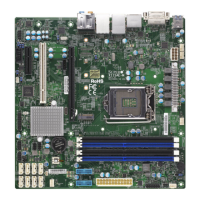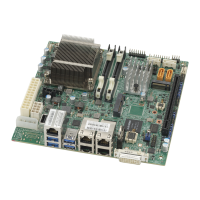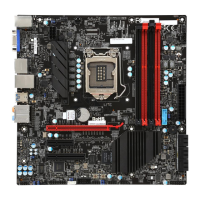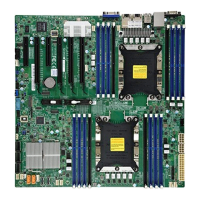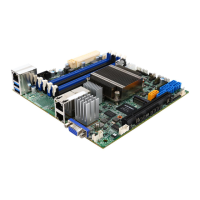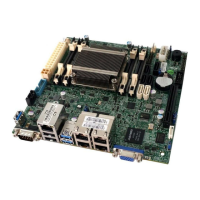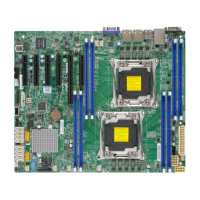Do you have a question about the Supermicro MBD-H11DSi and is the answer not in the manual?
Describes the manual's audience and purpose, and how to use it.
Highlights the key features and capabilities of the H11DSi-NT motherboard.
Explains symbols and formatting conventions used throughout the manual.
Provides contact details for Supermicro's main office in the USA.
Provides contact details for Supermicro's European branch.
Provides contact details for Supermicro's Asia-Pacific operations.
Provides essential links for drivers, manuals, and safety information.
Summarizes key components, connectors, and indicators on the motherboard.
Detailed table of jumpers, LEDs, and connectors with default settings.
Details the specifications and capabilities of the H11DSi-NT motherboard.
Describes the AMD EPYC 7000 series processor and chipset architecture.
Explains how to monitor system status like voltage, temperature, and fans.
Details the Advanced Configuration and Power Interface features.
Describes the Super I/O chip and its interfacing functions.
Provides precautions for handling ESD-sensitive components to prevent damage.
Guides on how to physically install the motherboard into a chassis.
Step-by-step instructions for installing the CPU and heatsink securely.
Details memory compatibility, types, and the process of installing DIMM modules.
Instructions on how to properly insert RAM modules into the memory slots.
Describes the locations and functions of all rear panel I/O connectors.
Explains connections for front chassis buttons and LEDs via the JF1 header.
Explains how jumpers function and details specific settings like CMOS clear.
Describes the function and meaning of various LEDs on the motherboard.
General steps for diagnosing and resolving system issues.
Troubleshooting steps to resolve issues where the system does not power on.
Steps to resolve issues related to no video output on the display.
Guidance for when the system fails to POST or boot into the OS.
Troubleshooting common issues related to installed RAM modules.
Troubleshooting steps for intermittent system instability or crashes.
Outlines the process and information needed when contacting Supermicro support.
Explains the procedure for obtaining an RMA and returning products for service.
Instructions for safely removing and installing the onboard CMOS battery.
Overview of the AMIBIOS Setup utility for the H11DSi-NT motherboard.
Describes the main screen of the BIOS utility and its configurable options.
Details various advanced configuration settings within the BIOS.
Configuration settings for the Intelligent Platform Management Interface (IPMI).
BIOS security settings including passwords, user access, and secure boot.
Settings for boot device selection, boot mode, and boot order priorities.
Options for saving configuration changes, resetting defaults, and exiting the BIOS setup.
Explains checkpoint codes generated during the Power-On Self-Test (POST).
Guide to installing essential drivers and utilities from Supermicro's resources.
Information on SuperDoctor 5, a hardware monitoring program for system health.
Warning and precautions regarding the replacement and handling of the onboard battery.
Guidelines for the proper disposal of the product according to national laws.
Method for recovering the BIOS using a USB device without additional utilities.
| CPU | Dual AMD EPYC 7002/7001 Series Processors |
|---|---|
| CPU Socket | SP3 |
| Chipset | AMD EPYC |
| Memory Capacity | Up to 2TB |
| Memory Slots | 16x 288-pin DDR4 DIMM slots |
| Memory Type | DDR4 |
| Expansion Slots | 3x PCI-E 3.0 x16 |
| M.2 Interface | 1x M.2 Interface: PCI-E 3.0 x4 |
| SATA | 8x SATA3 (6Gbps) |
| LAN | 2 x 10GbE |
| USB Ports | 2 x USB 3.0 |
| Power Connector | 24-pin ATX |
